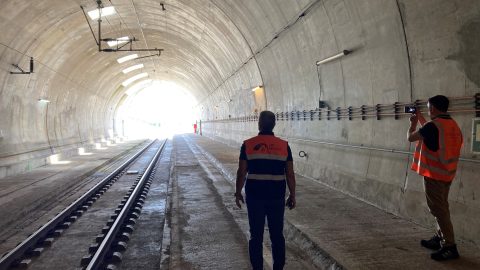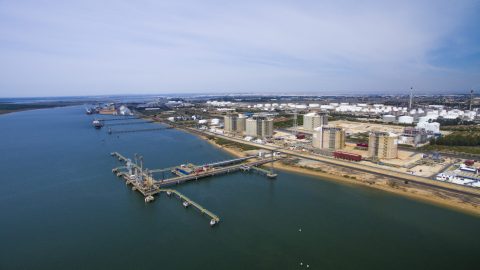Pilot trains with language tools on track this year

A language tool, that enables drivers and traffic controllers to communicate with each other, will be tested on several routes in Europe this year. It is called the T4R language tool (LT), and it is considered a major step in overcoming the language barrier experienced by the rail freight industry. A significant milestone has been reached with the successful testing of the prototype, in close collaboration with the French app development company Synvance.
The T4R language tool aims at improving interoperability in Europe. It is part of the T4R project, a two-year project coordinated by the UIC Freight Department as a joint UIC and RailNetEurope (RNE) project. The T4R project offers drivers a fully comprehensive set of predefined standardised messages and an LT which encompass all they have to exchange with an IM traffic controller in normal or exceptional operational situations in a country where they neither understand nor speak the local language.
Watch today’s RailFreight Live for more about this project. The show starts at 1pm CEST.
Pilot trains
The LT will be operationally tested on pilot trains running on cross-border sections between Italy and Austria on the Tarvisio-Villach-Pontebba cross-border section. The pilot tests are run by Rete Ferroviaria Italiana (RFI) and ÖBB-Infrastruktur AG (ÖBB Infra) together with the RUs Mercitalia, DB Cargo and ÖBB RCG.
Testing under laboratory conditions started in autumn 2020. Tests under field conditions will be performed from spring 2021 onwards and are expected to run until the end of September 2021.
Current situation
As of today, train drivers that operate locomotives on the cross-border connections are required to obtain a level B1 language certificate. The UIC considers this as “one of the many examples of a lack of a level playing field between different modes”, as the requirement leads to a lack of competent drivers. Ask any train driver and he or she will be able to give you plenty of examples of cross-border or interoperability issues.
This situation has a negative impact on the productivity and the attractiveness of rail as a transport mode. It leads to inefficiencies, lack of transparency and operational complexity, resulting in costly services. This project aims to wipe off this language barrier and enable any driver to continue driving his/her train safely in a country where he does not speak the national language.
Milestone
A significant milestone was reached, when the development and testing phase regarding the prototype, in close collaboration with the French app development company Synvance, was successfully achieved. The LT enables drivers and traffic controllers from different countries to communicate safely and effectively with each other across language barriers.
This capitalises on the work already committed on this matter between RUs and IMs at UIC and RNE on the level of the X Border project and sector Language Programme This work involved analysing the various types of operational situations that require exchanges between RUs drivers and IM traffic controllers. The project will make it possible to test this work and to further harmonise and standardise pre-defined messages in the light of the test results.
Do you want to hear more about this project? In today’s RailFreight Live, the project will be further explained.
You just read one of our premium articles free of charge
Want full access? Take advantage of our exclusive offer





